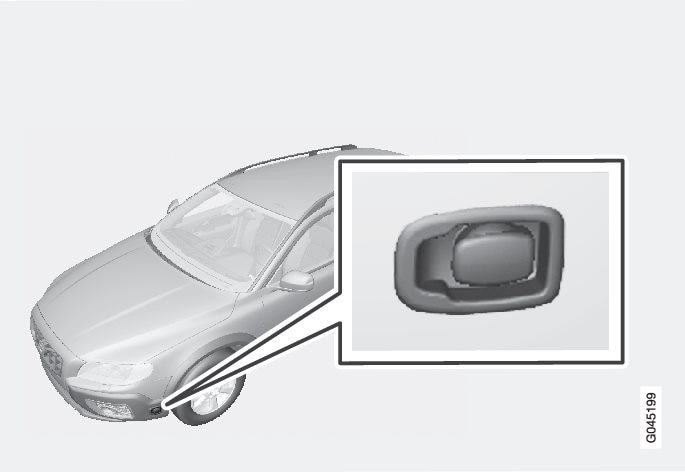Starting the engine – Flexifuel
Engine block heater*

Cars intended for E85 have an electric engine block heater*. Starting and driving with a preheated engine involves significantly lower emissions and reduced fuel consumption. For this reason you should aim to use the engine block heater throughout the winter months.
- In outside temperatures between +5 °C and -10° C the electric engine block heater should be plugged in for at least 1 hour.
- In outside temperatures between -10 °C and -20° C the electric engine block heater should be plugged in for at least 2 hours.
- In outside temperatures lower than -20° C the electric engine block heater should be plugged in for at least 3 hours.
Warning
Note
Points to remember for carrying reserve fuel:
- In the event of stalling due to an empty fuel tank, bioethanol E85 from a reserve fuel can may make the engine difficult to start in extreme cold. This is avoided by filling the reserve fuel can with 95 octane petrol.
For more information on Flexifuel's bioethanol E85 fuel, see Fuel - bioethanol E85.
In the event of starting difficulties
If the engine does not start at the first start attempt:
- Make further attempts to start with the START/STOP ENGINE button.
- Check that the engine block heater has been plugged in and, where appropriate, connect it for the time indicated above.
Important
Fuel adaptation
Flexifuel engines can be driven on both 95 octane unleaded petrol and bioethanol E85. Both fuels are filled in the common fuel tank so that any variations of mixing ratios between these two fuels is possible.
If the fuel tank is filled with petrol after the car has been driven on bioethanol E85 (or vice versa) then the engine may run slightly unevenly for a time. For this reason it is important to allow the engine to accustom itself (adapt) to the new fuel mixture.
Adaptation takes place automatically when the car is driven for a short period at an even speed.
Important
If the starter battery has been discharged or disconnected then a slightly longer period of driving is required for the adaptation as the memory for the electronics has been cleared.